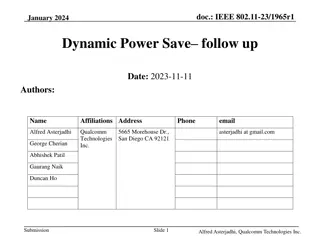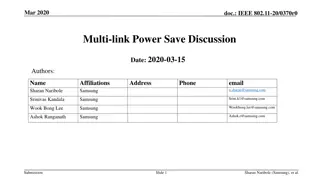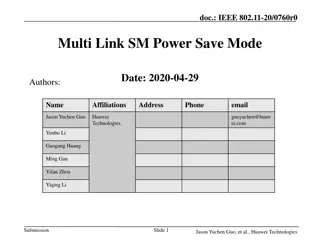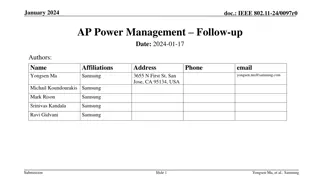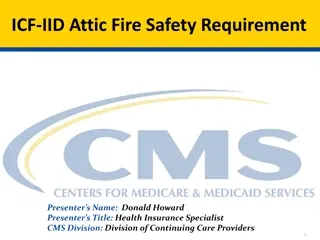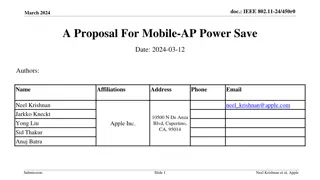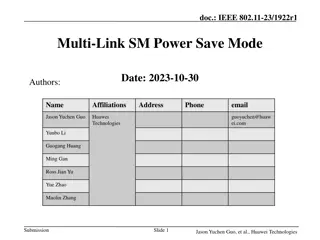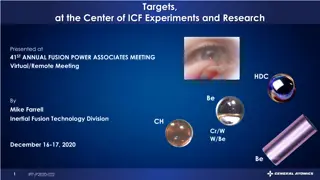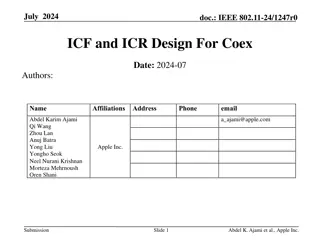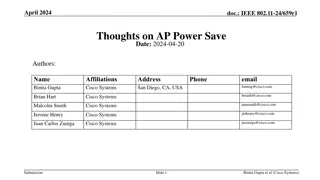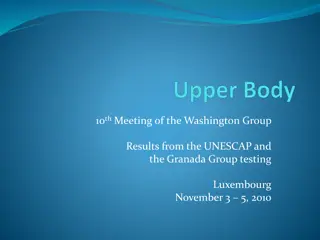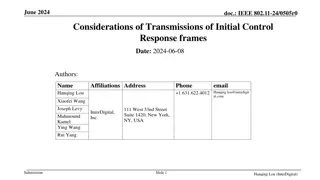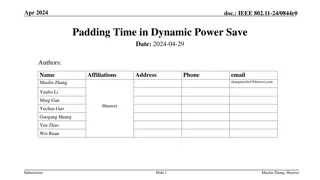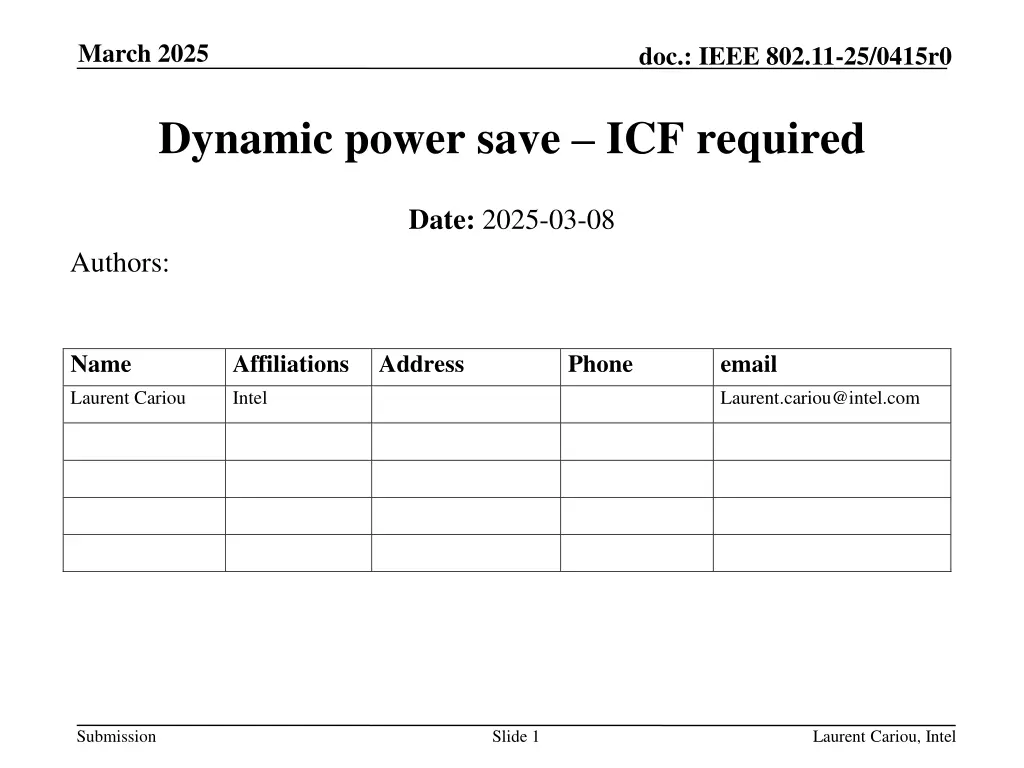
IEEE 802.11-25 Dynamic Power Save Modes Decision
Explore the proposal for defining two modes under Dynamic Power Save (DPS) for non-AP STAs in the IEEE 802.11-25 standard. The modes involve when the assisting AP should transmit ICF and the flexibility for non-AP STAs to select their preferred mode, considering factors like power efficiency and frame exchanges.
Download Presentation

Please find below an Image/Link to download the presentation.
The content on the website is provided AS IS for your information and personal use only. It may not be sold, licensed, or shared on other websites without obtaining consent from the author. If you encounter any issues during the download, it is possible that the publisher has removed the file from their server.
You are allowed to download the files provided on this website for personal or commercial use, subject to the condition that they are used lawfully. All files are the property of their respective owners.
The content on the website is provided AS IS for your information and personal use only. It may not be sold, licensed, or shared on other websites without obtaining consent from the author.
E N D
Presentation Transcript
March 2025 doc.: IEEE 802.11-25/0415r0 Dynamic power save ICF required Date: 2025-03-08 Authors: Name Laurent Cariou Affiliations Intel Address Phone email Laurent.cariou@intel.com Submission Slide 1 Laurent Cariou, Intel
March 2025 doc.: IEEE 802.11-25/0415r0 ICF prior to frame exchange We are defining Dynamic Power Save (DPS) for non-AP STAs, a mechanism that allows to transition from a low capability mode to a high capability mode thanks to the ICF-ICR exchange, in order to save power during the listening period We need to decide if the DPS assisting AP needs: A) to transmit ICF prior to any frame exchange with a DPS STA, similarly to eMLSR operation or B) to transmit ICF only prior to the frame exchanges that are intended to be transmitted in high capability mode Which means that in that case the DPS assisting AP can transmit frames other than ICF to the DPS STA in low capability mode Submission Slide 2 Laurent Cariou, Intel
March 2025 doc.: IEEE 802.11-25/0415r0 ICF prior to frame exchange There are pros and cons for the 2 modes A) allows to reuse eMLSR implementation and save extra power B) allows to not always need to have the overhead of the ICF-ICR transmission for short packets for instance And a clear majority is not emerging to allow to select only one mode. We therefore propose to define the 2 modes under DPS and allow the non-AP STA to select the mode that it will use when it enables DPS Submission Slide 3 Laurent Cariou, Intel
March 2025 doc.: IEEE 802.11-25/0415r0 Proposal Define 2 modes under DPS for a non-AP STA One mode where the DPS Assisting AP shall initiate frame exchanges with a DPS STA by sending an ICF if it intends to transmit to the DPS STA in HC mode In that case, the DPS Assisting AP may exchange frames with the DPS STA without being required to send an ICF as long as the frames use parameters consistent with the STAs LC mode The mode is not allowed if the DPS STA is operating on an eMLSR link One mode where the DPS Assisting AP shall initiate any frame exchange with a DPS STA by sending an ICF (i.e., the DPS Assisting AP can not exchange any frames with the DPS STA unless they are preceded with an ICF) Define a field, called ICF-required, in the frame sent by the non-AP STA to enable DPS in order to select the mode with which the STA will operate once DPS is enabled A DPS Assisting AP shall support operation with a DPS STA for both modes Submission Slide 4 Laurent Cariou, Intel
March 2025 doc.: IEEE 802.11-25/0415r0 Straw Poll Do you agree to add the following to the 11bn SFD: define a procedure for a DPS non-AP STA to indicate, during the DPS enablement procedure, an ICF-required field, where: If ICF-required is set to 0, the DPS Assisting AP shall initiate frame exchanges with a DPS STA by sending an ICF if it intends to transmit to the DPS STA in HC mode (i.e. the DPS Assisting AP may exchange frames with the DPS STA without being required to send an ICF as long as the frames use parameters consistent with the STAs LC mode) ICF-required set to 0 is only allowed if the DPS STA is not operating on an eMLSR link If ICF-required is set to 1, the DPS Assisting AP shall initiate any frame exchange with a DPS STA by sending an ICF (i.e., the DPS Assisting AP can not exchange any frames with the DPS STA unless they are preceded with an ICF) A DPS AssistingAP shall support operation with a DPS STA that has set ICF-Required to 0 or 1 Submission Slide 5 Laurent Cariou, Intel


